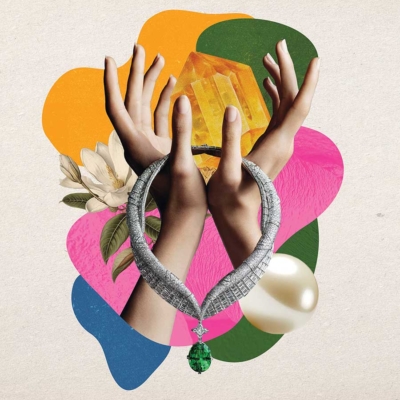La cuenta por favor! brought the bill, minus two complimentary snifters of the island’s locally distilled herbal digestif, Hierbas. In a discreet leather portfolio, the receipt landed on a small corner table, during the Wednesday lunch rush at Can Blayet, only moments before every fork froze in mid air. Santi, the server who had been covering both dining rooms, stood still as a stoat, clearing his throat, in the wake of several gunshots, which rang out across the Balearic bar.
Mounted on a wall to the right of the entrance, a wide screen apprised hungry eyes that Pakistani trained, masked extremists had come ashore by inflatable speedboats, grenades in hand. The plot was not against Spain, but on the shifting sands of a landfill reclaimed from sub-continental shallows of the Arabian Sea. These men were attacking Nariman Point, Mumbai’s business district built by bankers and power brokers, with civic pride and black market steel.
The death squad had started at a Jewish Center in Colaba, before hitting bus and train stations, a hospital and café with AK-47 rifles. Bombs had exploded in two taxis, and now live on television, in simultaneous shootings, the terrorists were targeting two luxury hotels, The Taj Mahal, and The Oberoi nearby, both of which accommodated members of the European parliament. Somehow in all the chaos, the Countess of Bornos, who was currently serving as President of Madrid, managed to avoid assassination. Baptized Esperanza, her Christian name, means hope.
Undeterred by the television, a Spanish sun smiled through the windows, its insolent beams bathing the dark wood panelling of the restaurant’s walls in a light, which bounced off spotless wine glasses and cutlery set on pristine tablecloths. Though the merry mood was broken, what went unspoken, was not only that an American girl at the table in the corner, had lived at the Taj Hotel on Nariman Point in Mumbai for two years. But also how the surrounding families and friends, who’d never been to India, comforted themselves with a single thought. Nothing so terrifying as what they were watching could happen here because, within the thirty houses that huddled around an eighteenth century church in the village of El Pilar de la Mola, we were safe.
In the shade of many a whitewashed windmill’s grain grinding blades, the 1960s had brought a peaceful invasion to pervade the island’s highest place. Cunning Californians who couldn’t quite face their Uncle Sam, fled from the West Coast, armed only with passports of navy blue embossed by an American Eagle in gold, the new hallucinogens and ancient eastern philosophies, to gather where they still do, on an almost Moroccan market square, whose mosaic tiles offer for free, even to the penniless, one transcendental image. A dove.
To weather a Catalunian winter which is not always kind, and with the Church’s full dispensation, self-sufficient Iberians conduct what they call La Matanza. Annual and autumnal, it is the sacrifice of a fattened pig, where including the blood and every inch of intestine, all porcine parts are prepared. Clever brinkmanship carried paprika and a recipe across the drink, for the unifying link between Rome, Sicily, Sardinia and finally Formentera. Meats not immediately eaten are preserved as strong sausages to be enjoyed all year long, as Botifarro and Sobrassada.
Coddled is the black beast and all the more coveted for feasting under cork trees, on acorns most mornings. In all its robustness, Jamon Iberico’s deliverance will be by rusty truck, and to a mainland abattoir. But be aware that, in an age old rite found the world over, families uncork a lot of bottles before sharpening their knives to slaughter a designated individual with their bare hands. Together, they share what La Matanza means, which is, in a word, murder.
More of a massacre, the Black Death amounted to countless 14th Century fleas groping their way down the Silk Road from Central and East Asia, to the Crimea and Constantinople. From whence, it hopped around, depopulating centers of civilization, such as Scandinavia and Syria. Perhaps not in that disorder, but unimpeded by human borders, they scarpered to embark on twelve Genoese galleys; merchant ships bound for the Mediterranean Basin. Known as the pestilence, it decimated the world population by 100 million in a total of ten waves, hitting Formentera with such heft, that not a soul was left. Only footprints in the sand.
The solitary lighthouse at La Mola was immortalized in a novel by Jules Verne, who referred to it’s lone throne of stone as the end of the world. Up there, lush pine forests part, allowing for a few vineyards and farms, before the last rooster’s crow let’s you know there is only the lighthouse ahead. Locals call it, El Far.
Here, astronomer Palmin Rosete, occupied himself to make exacting measurements of the earth’s meridian arc, until a comet crashed down, and swept away the Far, part of Formentera, and most of the Med. There is an admirable shred of truth to Verne’s famous fiction, in that the astronomer survived. Like all stargazers do.
When the Covid pandemic proscribed his confinement to an apartment in Brussels, a French artist and his freewheeling Egyptian wife, with whom he’d mated for life, took the last flight out to Ibiza. From there, they boarded the first boat to Formentera, wanting to renew the commitment they’d made to what had been their true habitation for half a century, in a very particular locale. Aside from the impenetrable fortress that is La Mola, their house is found in the island’s best defended venda. One preternaturally patrolled by its own homegrown pack of Podenco Hounds, who welcomed the distinguished couple back to where the sturdiest of residents shop at Verduras, drink at El Sueno, and resort to their Balearic boats bobbing in a pleasure port, simply by following signs that point to Porto Saler.
Nose to the demanding grindstone that was his semi-arid garden, the Frenchman might have fallen in to a reverie about a day well spent, on his rudderless catamaran. Hand hewn, that precarious craft the Catalans call patin a vela, steered the winds, with the sheer weight of himself as skipper, a captain ably assisted by two mates. Stealing a shining moment, the three were slicing through the seas around a rhino-shaped rock, known as Es Vedra, when the dorsal fin of a submarine sized shark surfaced. One longer than any of them had ever seen.
Though probably of the pilgrim species, its gleaming size seemed similar to those sleeper sharks that live, unhurried for hundreds of years, on another side of the same globe, in glacial waters washing the shores of Greenland. This fish, a Spanish hick’s Moby Dick, blinded the three men’s minds not with danger, but wonder at the beauty of how it slipped beneath the twin hulls of their slender sailing vessel.
This enigmatic man listened like a child, but when he spoke, took charge. He joked a lot and lived large. So maybe he was mulling this big fish over in his mind. But while nobody up on La Mola or anywhere else was looking down, perhaps only for himself, the painter smiled, happy on the terra firma of his house in Porto Saler. Kneeling, he adjusted an aspect of one last nagging detail, and thus unhindered, he died. In a private place. That garden nobody owns but where each of us is given the chance to delve. There, we can cultivate a hell of our own making, or choose to sculpt for ourselves a personal paradise.
LOVETHEGLOSS.IE?
Sign up to our MAILING LIST now for a roundup of the latest fashion, beauty, interiors and entertaining news from THE GLOSS MAGAZINE’s daily dispatches.









